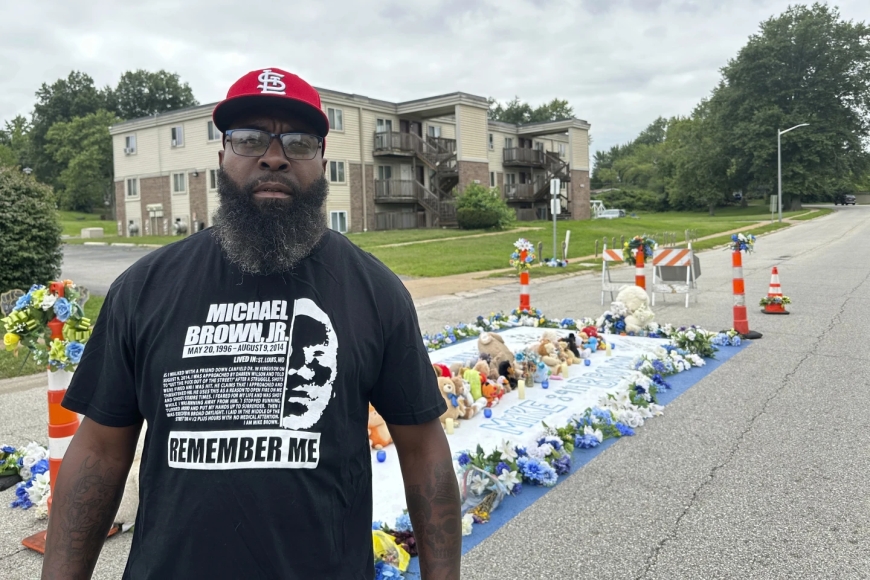Ferguson marks 10 years since Michael Brown’s death

Michael Brown once told his father the “world is going to know my name,” words Michael Brown Sr. still takes to heart. Friday marks 10 years since the 18-year-old was killed by a police officer in Ferguson, Missouri, turning the St. Louis suburb into the focal point of the national reckoning with the historically tense relationship between U.S. law enforcement and Black people.
The elder Brown now devotes his time to the Michael Brown Sr. Chosen for Change Organization, a foundation that helps fathers, mothers and children come to grips with tragedy in their lives. It’s a legacy he feels obligated to pass on under the name he shares with his son.
“He was going to shake the world,” Brown said of his son. “So, I guess that’s what we’re doing. He’s still doing the work from the grave.”
Brown’s death catalyzed massive change in Ferguson. In 2014, every city leader was white in the majority-Black city. Today, the mayor, police chief, city attorney and other leaders are Black. The mostly-white police force of a decade ago now has more officers that are Black than white.
But problems persist. The current and former mayor acknowledge that race still divides the community of 18,000 residents. Some are concerned that police, wary of criticism, aren’t enforcing traffic laws, since serious and sometimes fatal wrecks are common.
What happened on Aug. 9, 2014
Michael Brown and a friend were walking along Canfield Drive when Officer Darren Wilson drove up and told them to get on the sidewalk. A fight ensued and fearing for his life, the teenager ran.
Though Brown was unarmed, Wilson described Brown as menacing at 6-foot-4 and claimed he came at the officer. But some nearby residents said Brown had his hands up in surrender when Wilson shot him.
Activist Zaki Baruti recalled the horror and fear that other Black residents felt after Brown’s death.
“There was a sense of shock, not knowing what to do,” Baruti said.
James Knowles III, who was mayor in 2014, believes that the widespread anger about Brown’s death was driven by several factors. Social media allowed information — and sometimes misinformation — to spread quickly, he said. Neighbors were incensed when Brown’s body was left in the street for over four hours on that hot August afternoon.
The night after Brown’s death, thousands of protesters marched along West Florissant Avenue, near Canfield. A QuikTrip convenience store was torched, and goods were stolen from many businesses. Months of fierce protest, at which demonstrators were tear gassed, soon thrust the city into the national spotlight.
When St. Louis County Prosecuting Attorney Bob McCulloch announced in November 2014 that Wilson would not be charged, protests erupted again.













































